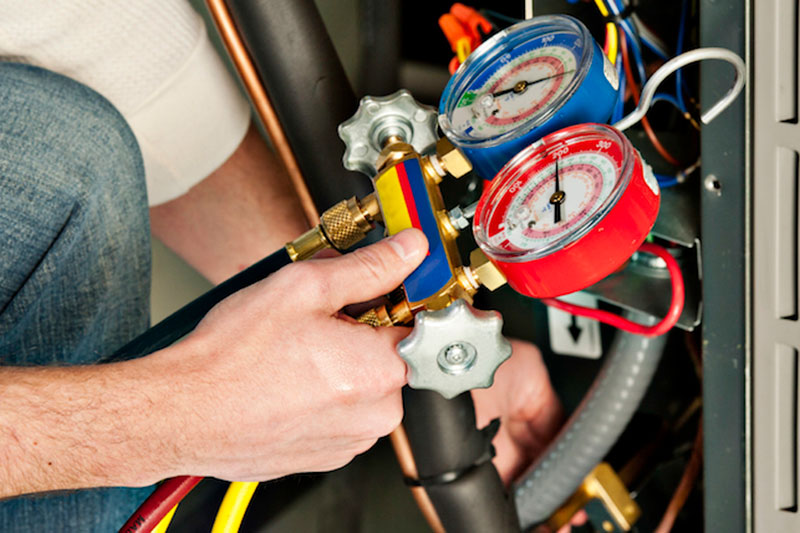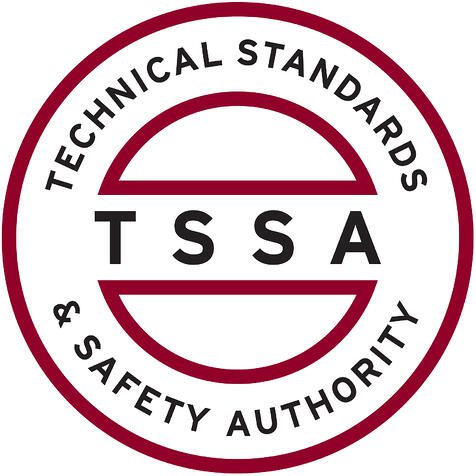
You might not think a lot about how your air conditioner functions, but it requires refrigerant to keep your house fresh. This refrigerant is controlled by environmental regulation, as it contains chemicals.
Depending on when your air conditioner was added to your home, it may require R-22, R-410A or R-32 refrigerant. We’ll go over the differences and which air conditioner refrigerants are being phased out in Dresden, as well as how these phaseouts affect you.
What’s R-22 and Why Is It No Longer Being Made?
If your air conditioner was installed before 2010, it possibly has Freon®. You can learn if your air conditioner contains it by reaching us at 519-683-2339. You can also inspect the name plate on your air conditioner condenser, which is situated outside your home. This sticker will include details on what model of refrigerant your AC uses.
Freon, which is also known as R-22, contains chlorine. Scientists consider this chemical to be bad for the earth’s ozone layer and one that contributes to global warming. The Environmental Protection Agency, which governs refrigerants in the United States, banned its creation and import in January 2020.
Should I Replace My R-22 Air Conditioner?
It differs. If your air conditioning is running as designed, you can continue to run it. With regular air conditioner maintenance, you can expect your AC to work around 15–20 years. However, the Department of Energy reports that substituting a 10-year-old air conditioner could save you 20–40% on annual cooling expenses!
If you don’t get a new air conditioner, it can cause a problem if you need air conditioning repair in the future, specifically for refrigerant. Repairs could be more expensive, as only reduced amounts of recycled and reclaimed R-22 is accessible.
With the end of R-22, most new air conditioners now rely on Puron®. Also known as R-410A, this refrigerant was developed to keep the ozone layer strong. Since it needs an incompatible pressure level, it isn’t compatible with air conditioners that need R-22 for cooling.
However, Puron still has the possibility to create global warming. Because of that, it might also ultimately be discontinued. Although it hasn’t been communicated yet for residential air conditioners, it’s anticipated sometime this decade.
What Refrigerant Will Take Over R-410A?
In preparation of the discontinuation, some manufacturers have started using R-32 in new air conditioners. This refrigerant ranks low for global warming potential—around one-third less than R-410A. And it also reduces energy expenditure by around 10%, according to the Intergovernmental Panel on Climate Change’s Fourth Assessment Report. That’s savings that may be passed on to you through your cooling bills.
McFadden Heating & Cooling Can Assist with All Your Air Conditioning Needs
In brief, the changes to air conditioner refrigerant probably won’t impact you greatly until you need repairs. But as we talked about previously, repairs connected to refrigerant may be pricier because of the reduced quantities that are accessible.
In addition to that, your air conditioner typically malfunctions at the worst time, frequently on the hottest day when we’re experiencing a lot of other requests for AC repair.
If your air conditioner requires an outdated refrigerant or is more than 15 years old, we advise installing an up-to-date, energy-efficient air conditioner. This delivers a trouble-free summer and could even lower your cooling costs, especially if you get an ENERGY STAR®-rated air conditioner. Plus, McFadden Heating & Cooling offers many financing options to make your new air conditioner work with your budget. Contact us at 519-683-2339 to begin today with a free estimate.




